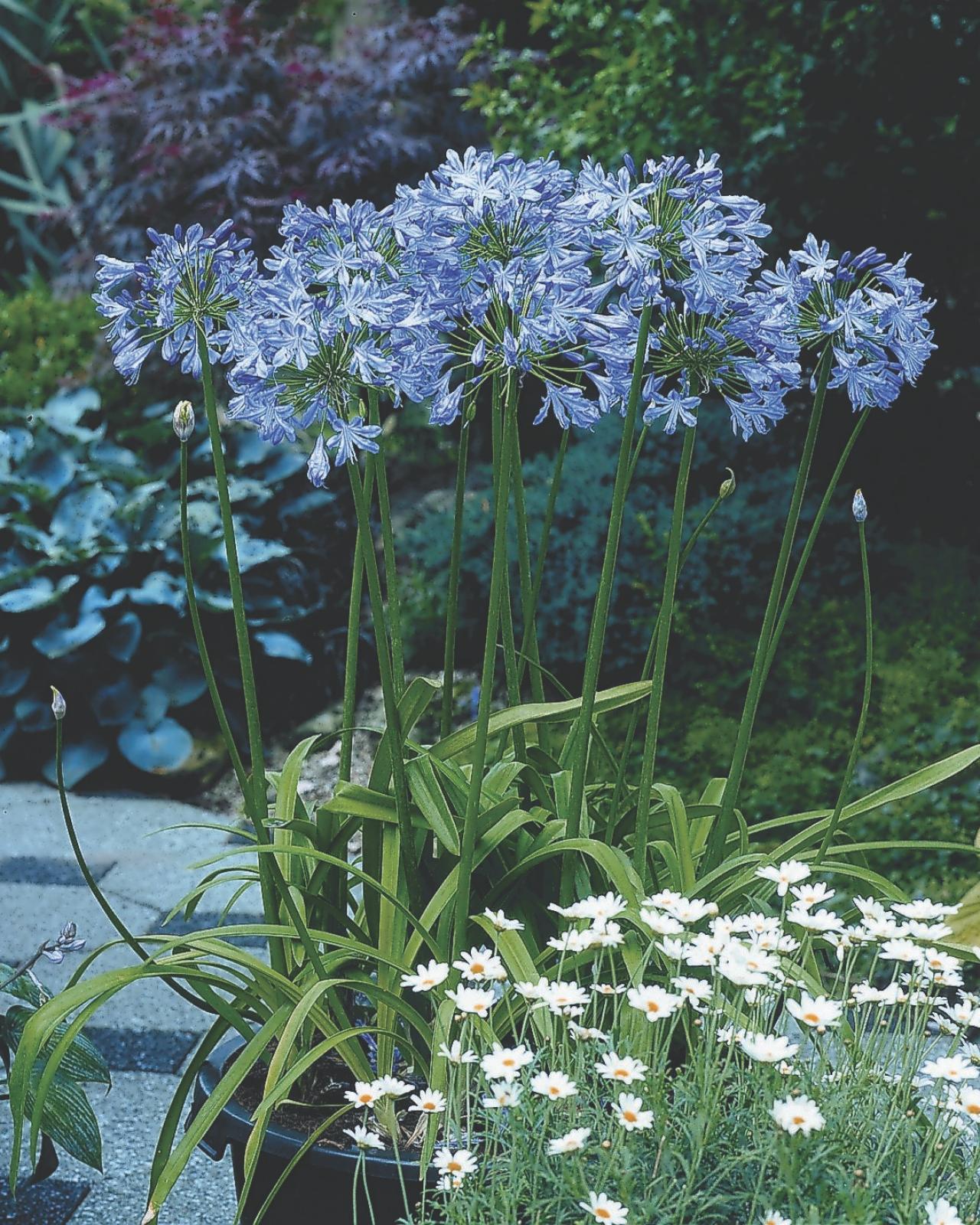Unleashing the Secret to Effective Agapanthus Cultivation: Tips and Tricks for a Flourishing Garden
In the world of gardening, growing agapanthus efficiently requires a tactical technique that includes numerous facets of plant treatment. By recognizing the subtleties of agapanthus farming, one can produce an environment where these plants thrive and grow generously.
Planting Agapanthus: Ideal Practices
When growing Agapanthus, correct soil preparation is crucial for making sure successful growth and advancement of these lovely flowers. Agapanthus, commonly called Lily of the Nile or African lily, grows in well-draining soil with a slightly acidic to neutral pH degree - Agapanthus. Before growing, it is vital to amend heavy clay soils with raw material such as compost or peat moss to improve water drainage and provide essential nutrients for the plants
To grow Agapanthus, select a location that obtains complete sunshine to partial color, as this will certainly promote healthy development and abundant blooming. Dig an opening twice the size of the plant's root sphere and put the Agapanthus at the very same depth it was formerly growing. Gently backfill the hole with soil, pushing down strongly to get rid of any kind of air pockets around the origins.
Water the newly planted Agapanthus thoroughly and continue to keep the soil evenly damp, specifically during the plant's active growing season. Agapanthus. Using a well balanced plant food once a month can further sustain the plant's development and blooming. By following these best methods for growing Agapanthus, you can produce a stunning display of these fascinating flowers in your yard
Suitable Dirt Issues for Agapanthus
For optimum development and growing success of Agapanthus plants, ensuring the soil conditions are perfect is vital. Agapanthus grows in well-draining dirt with a somewhat acidic to neutral pH degree varying from 6.0 to 7.0. This kind of soil enables appropriate water drain, stopping waterlogging which can cause root rot. To improve soil drain, think about adding organic matter such as garden compost or peat moss when preparing the growing website. Additionally, Agapanthus likes soil that is rich in nutrients, so incorporating a well balanced fertilizer during the expanding season can promote healthy development and vivid flowers.

Watering and Feeding Tips
To make certain healthy development and vibrant flowers, correct watering and feeding techniques are crucial for successful Agapanthus cultivation. Agapanthus plants take advantage of regular watering, particularly during the expanding period. It is recommended to water deeply when a week, guaranteeing the dirt is damp however not soaked. Throughout hot weather condition or in pots, more regular watering might be essential to stop the dirt from drying completely.
When it concerns fertilizing Agapanthus, a balanced plant food with equal parts nitrogen, phosphorus, and potassium can be applied in the spring to advertise healthy development and blooming. Slow-release plant foods are perfect for supplying nutrients gradually over an extensive duration. Avoid over-fertilizing, as this can bring about too much vegetation growth at the cost of flowers.
Additionally, including natural matter like compost into the soil can enhance nutrient degrees and enhance dirt framework, aiding in the general wellness of the Agapanthus plants. By following these watering and fertilizing pointers, gardeners can ensure their Agapanthus plants flourish and produce spectacular display screens of flowers.
Pruning and Deadheading Methods
Appropriate pruning and deadheading techniques play an essential role in keeping the wellness and aesthetic appeals of Agapanthus plants, complementing the necessary techniques of watering and feeding for effective cultivation. Pruning Agapanthus entails eliminating spent flower heads, yellowing or dead leaves, and general shaping of the plant to advertise far better growth. Deadheading, the procedure of removing faded blossoms, not only enhances the plant's look but likewise motivates more growing.
When deadheading Agapanthus, it is suggested to clip off the blossom stem at the base utilizing sharp, tidy shears. This procedure redirects the plant's energy from seed production back into root and vegetation growth, promoting a healthier and a Web Site lot more durable plant. Regular deadheading can expand the growing period of Agapanthus and avoid self-seeding, which can result in congestion.
In terms of trimming, Agapanthus normally advantages from a light trim after blossoming to clean up the plant and urge fresh development. Reducing the invested blossom stems and eliminating any type of broken or dead foliage aids maintain the plant's vigor and general appearance. Nevertheless, it is vital to avoid reducing right into the crown of the plant, as this can compromise its health and wellness.

Protecting Agapanthus From Pests and Diseases
Executing effective insect and condition monitoring techniques is crucial to safeguarding the health and wellness and vigor site link of Agapanthus plants in growing. Agapanthus are usually durable plants, yet they can still come down with numerous pests and conditions if not properly More Bonuses cared for. One common pest that influences Agapanthus is the Agapanthus borer, a caterpillar that tunnels into the plant, causing damages to the leaves and flowers. To stop infestations, regular inspection of the plants is vital. If borers are spotted, they can be manually eliminated, or insecticidal soap can be used as a control procedure.
In enhancement to bugs, Agapanthus are vulnerable to conditions such as root rot and fungal fallen leave spots. These problems can frequently be stopped by ensuring proper drain and staying clear of overwatering. Impacted components of the plant must be without delay removed to avoid additional spread if indications of illness show up. Fungicides may likewise be utilized as a treatment procedure, complying with the maker's guidelines meticulously. By remaining attentive and attending to bug and condition concerns without delay, gardeners can assist their Agapanthus flourish and prosper.

Final Thought
In conclusion, effective cultivation of agapanthus requires appropriate planting strategies, suitable soil problems, sufficient watering and feeding, regular pruning and deadheading, and protection from parasites and diseases. By complying with these pointers and tricks, gardeners can make certain a prospering garden full of lovely agapanthus flowers. Agapanthus. Remember to preserve regular care and interest to information to advertise the health and longevity of these sensational plants
When growing Agapanthus, appropriate dirt prep work is important for making sure successful growth and development of these gorgeous blossoms.Water the recently grown Agapanthus extensively and continue to keep the dirt equally moist, especially during the plant's energetic expanding period.For optimal growth and flowering success of Agapanthus plants, ensuring the soil conditions are suitable is crucial. When hair transplanting or growing Agapanthus, make certain the soil is well-prepared to provide the required foundation for the plants to develop themselves efficiently. One typical bug that impacts Agapanthus is the Agapanthus borer, a caterpillar that passages into the plant, triggering damage to the flowers and fallen leaves.